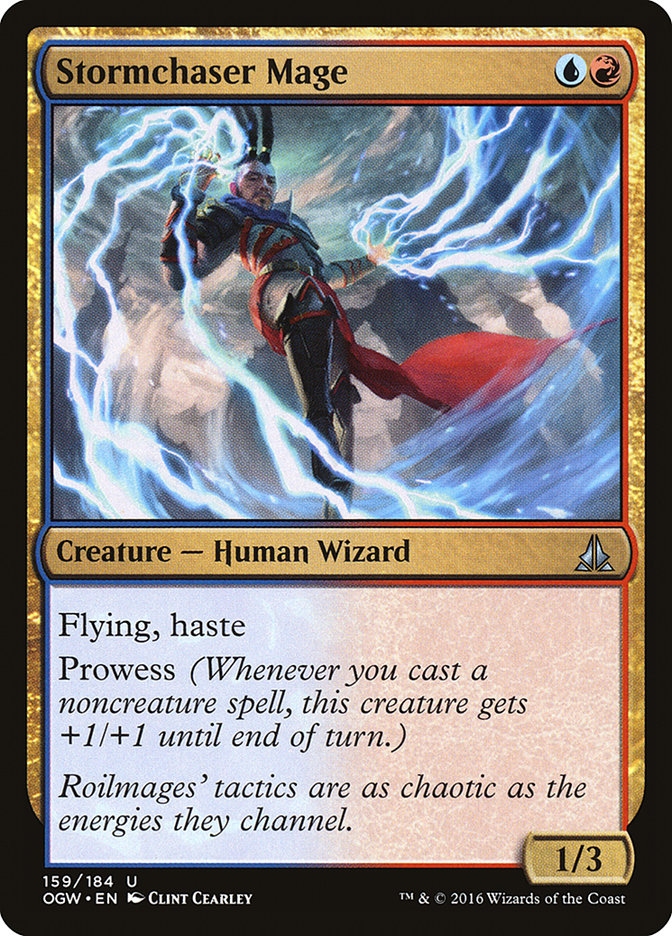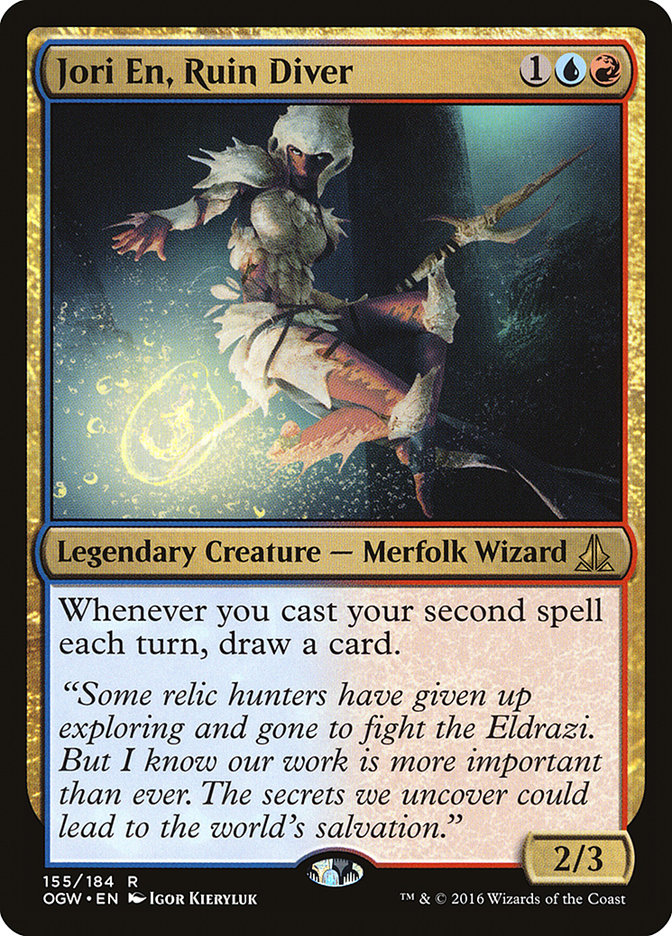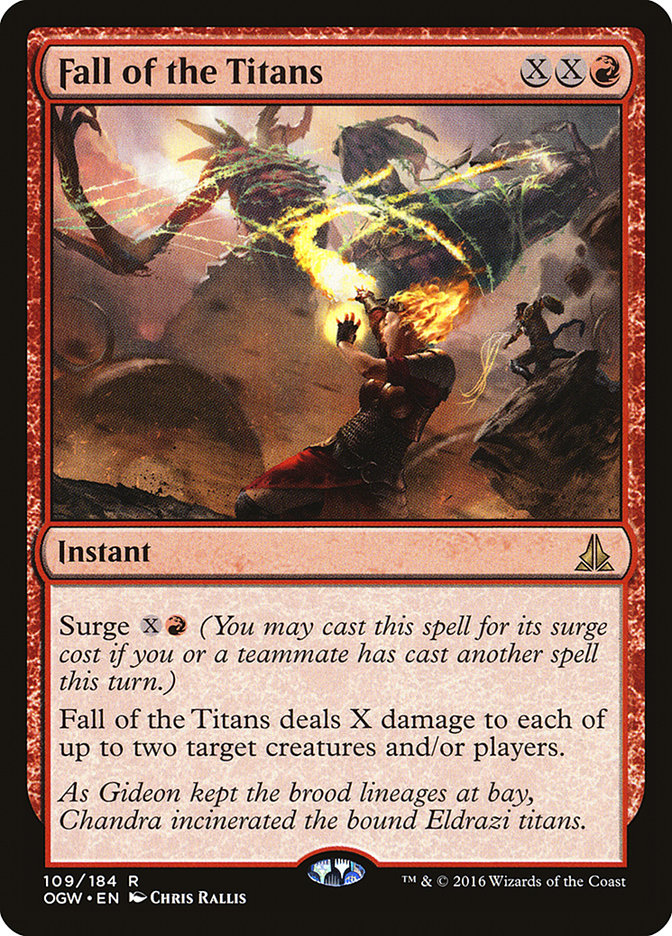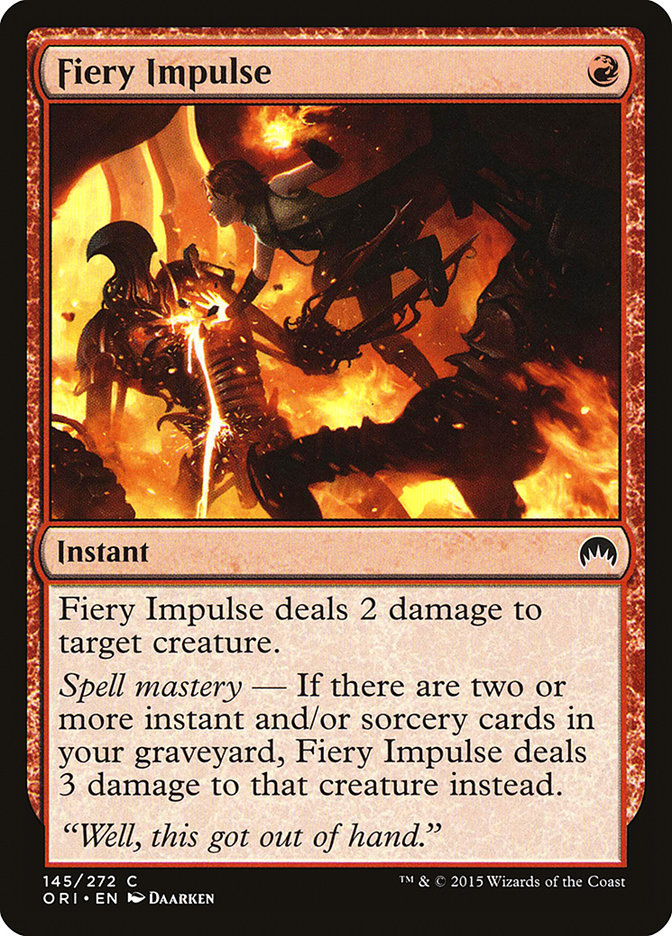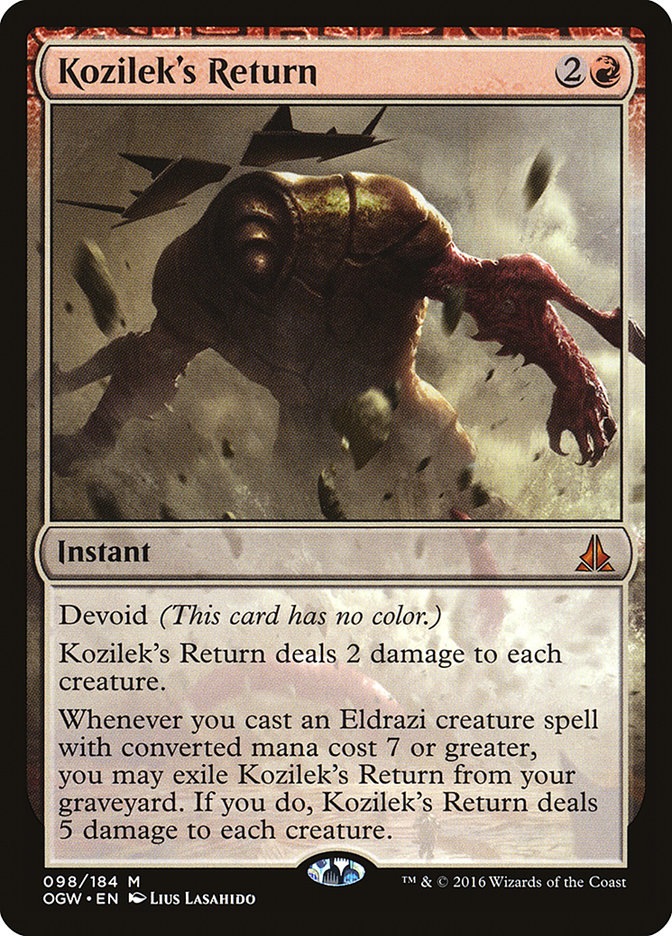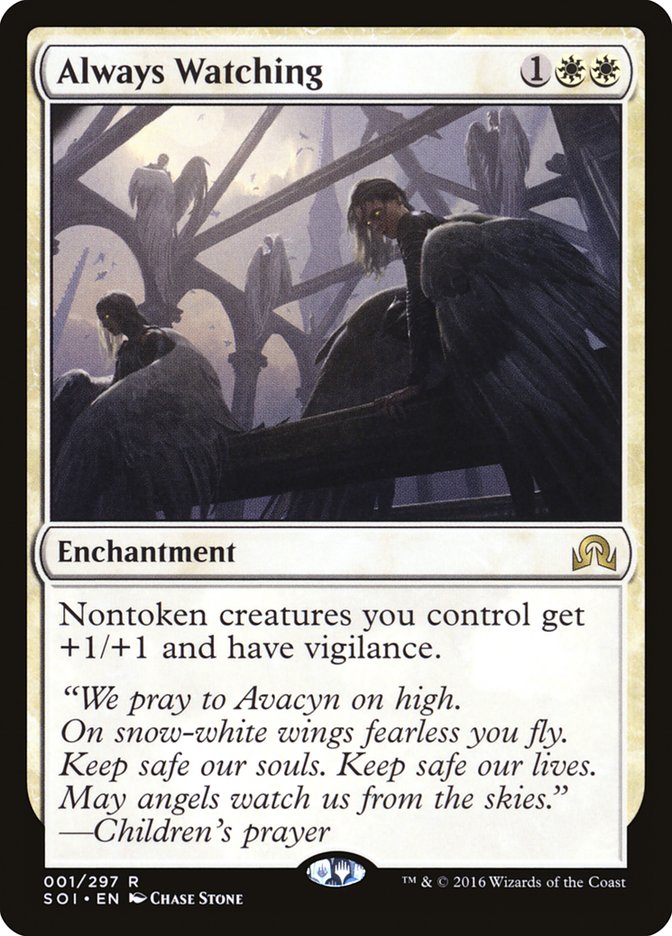Normally, after losing a win-and-in for Top 8, I would be hurt. Losing in a tournament as important as an Invitational should make it even worse. But instead I was calm. I had played every round of the tournament, played reasonably well, and was beaten fair and square. My matches were enjoyable, and #SCGINVI was a blast, which was important.
You see, since moving to Roanoke, I have been on quite a cold streak. It was beginning to get to me. The last few events, I sat down for Round 1 already defeated and waiting until I could drop and stop worrying about losing more. That certainly didn’t help things any and my confidence was waning.
When you lose confidence, you lose the ability to make even the most basic decisions. You start pressing and trying to find every possible variable in the equation because only complete knowledge will make you sure of your decision. This growing desire for certainty in a game that revolves around uncertainty is one of the greatest inhibitors to success. It causes you to remain far too cautious in every respect, from metagame predictions and deck choice to in-game sequencing and sideboarding.
It’s a paralytic fear that eventually saps away your autonomy, which is exactly what I experienced. I started leaning too heavily on the people around me. I would just play what someone seemed confident about and hope they were right rather than make the decision myself. Now, I don’t mean to put down the players around me, since they are an excellent team, but no one can really make decisions for you because they can’t watch you play every game and get inside your head that way.
Sure, they can recognize your tendencies and play style, listen to your reasoning, and help you along in the decision-making process, but much of that process is handled by our subconscious, and it is your responsibility to account for that in making the final decision.
You have to have some part of yourself invested in every decision you make, or invariably your discipline and commitment will wane, along with your chances of winning. Without this investment you are essentially a surrogate, a biological robot playing a game while your human self is an idle spectator, waiting for the moment they are freed from their self-imposed servitude in the tournament.
In hindsight, it’s not surprising that my best finish over this stretch was with a deck that everyone around me labeled as bad, U/R Prowess, because it was a deck that I was invested in, enjoyed, and actively sought to learn. With decks like Mardu Green or B/W Eldrazi, I was merely going through the motions, not really playing Magic. As a result, my play was aimless and incoherent, and I had no chance at winning.
My finish with U/R Prowess wasn’t enough to break this mental block, and I nearly fell into the same trap this weekend in Columbus. But as I was sitting in my apartment, sleeving aggressive white cards and feeling miserable about it, I knew I had to play the deck I truly wanted to play, even if it was a worse choice in some objective sense. It was time to strap on some goggles.
Creatures (9)
Planeswalkers (2)
Lands (26)
Spells (23)
- 4 Fiery Temper
- 4 Lightning Axe
- 4 Tormenting Voice
- 1 Fiery Impulse
- 3 Pyromancer's Goggles
- 3 Magmatic Insight
- 2 Kozilek's Return
- 2 Fall of the Titans
Sideboard

What a blast this deck is to play. I pretty quickly regretted not playing Todd‘s baby last week in Baltimore because the deck is incredibly powerful, would be difficult for many players to play against, and is more my style than the B/W Eldrazi list most of the Roanoke crew played. I don’t normally play control decks, but this one is more of an engine or synergy deck that happens to exploit its key cards by killing your opponent’s creatures and drawing a lot of cards. A lot of games play out like puzzles where you have to figure out intricate sequencing, which I love.
Plus, you get to deal about 39027153275893271589327581758329157483925734829507 damage with Fall of the Titans. (Don’t worry. I did the math.)
I was worried that the deck’s novelty bore too much of the responsibility for Todd‘s finish last weekend, but the power of the deck was readily apparent during testing, and it was enough to make me take the risk.
Playing this deck set the stage for my entire weekend. After a quick Round 1 loss in the mirror to Todd, it would have been easy to resign myself to another lost weekend, and I almost did. Instead I rattled off three wins in a row in hilariously fun fashion, often leaving my opponent with zero nonland resources against my embarrassment of riches. I made some silly mistakes, one of which cost me a game, but the deck is powerful enough to compensate you for that, and I found myself truly competing for the first time in a while.
I went 3-1 in the Standard portion on Day 2 as well, finishing a very respectable 6-2. Moving forward, the card I was most impressed by was Fiery Impulse, and I would certainly like to find room for additional copies.
Fiery Impulse was a card I lobbied for as a singleton, since I wanted another cheap removal spell against Humans and Fiery Impulse kills most of the creatures in Bant Company too. It’s also relevant that it costs a single red mana, so it’s another spell you can cast after playing Pyromancer’s Goggles on five mana.
Both Lightning Axe and Fiery Temper require some effort to cast without losing mana or cards, but Impulse just comes in, does its job, and leaves, a true role-player. Axe in particular was awkward to cast multiple times, especially when I drew two or more copies early on. I could see shaving the fourth and playing a card with a lower ceiling but higher floor on its effectiveness.
Kozilek’s Return was also lackluster, since Always Watching can move plenty of the Humans creatures out of its range and Bant Company plays plenty of 2/3s, so I could see relegating it to the sideboard.
I would also like to see a few more madness spells to help get value from the discard outlets. Just the Wind and Nagging Thoughts aren’t too exciting but they could be valuable role-players. Just the Wind notably answers Ormendahl, Profane Prince, while Nagging Thoughts offers more velocity and plays nicely with Drownyard Temple.
All of these changes are minor and the last few slots will continue to change in accordance with the metagame, which is a testament to how well-tuned Todd‘s initial list was. A significant change like Jameson Perdue‘s inclusion of maindeck Fevered Visions is unwarranted, especially in a metagame that is so aggressive. It is much more important to put your reps in with the deck, since the sequencing is so intricate with many seemingly equivalent options. I certainly did not play proficiently in many of my matches, but the deck is powerful enough to compensate for some errors, which is definitely something I appreciated given my mental state.
Ultimately, I left a tournament excited about my deck for the first time in quite a while and I certainly hope that the deck remains relevant in the wake of #PTSOI this weekend, because Goggling people once just wasn’t enough.
Light ‘Em Up
Creatures (14)
Lands (19)
Spells (27)

With all this talk about playing decks you are excited about, it may seem strange that I chose to play Burn in the Modern portion of #SCGINVI, but this list represents another instance of me retaking control over my decisions and owning them as mine, since I deviated from the current stock lists by eschewing Wild Nacatl and Atarka’s Command.
In my recent Modern events, I have played a fair amount of Zoo, and I had grown increasingly frustrated with the non-haste creatures because they allow my opponent to trade resources without losing any life in the exchange. Both Zoo and Burn are trying to interact as little as possible, but creatures are much easier to interact with.
Zoo is especially vulnerable to Kitchen Finks because you are almost always forced to attack through it unless you have a Path to Exile, and attacking through it means Finks will trade for one or two creatures while gaining your opponent at least four life. Even though Zoo is the more resilient of the two decks because the creatures have a higher ceiling on how much damage they can deal, trying to overcome Finks is very difficult, and Finks is more popular now than it has been since Birthing Pod was banned.
The current Burn lists with Atarka’s Command and Wild Nacatl occupy a strange space where they inherit the weaknesses of traditional Burn and Zoo without gaining much of anything. The increased creature count makes you more vulnerable to Finks, but you are not as resilient against lifegain as Zoo because your opponent can reasonably remove most of your creatures and not fear as many replacements. You are worse in topdeck situations when your opponent is trying to fade burn spells because Nacatl makes no immediate threat to your opponent’s life total.
On top of this, the added color makes the mana less consistent, which is something to avoid in aggressive decks and forces you to take more damage from your lands, which makes you worse against opposing aggressive decks. It’s an attempt to splice two decks together so that you eliminate the weakest cards from either deck, but in this instance it doesn’t work because the deck becomes incoherent. When it comes to lighting people on fire, simpler is better.
After a solid 6-2 finish in the Invitational, I played the same list in the Modern Classic, losing in the semifinals and compiling an overall record of 8-2 in the tournament. Ironically, both of my tournaments ended with losses to Zoo, where their focus on creatures is certainly an advantage. I was surprised by how popular Zoo was in both events, so helping out that matchup is my main focus moving forward. The fourth Destructive Revelry and second Mutagenic Growth are likely unnecessary and can become more Phyrexian Unlifes, Lightning Helixes, or something a bit spicier.
As the format appears to be very aggressive right now, I could also see adding a land because your early development is so important in those matchups. I was certainly punished several times by missing early land drops, since the nature of Burn requires you to keep land-light hands so you have enough resources to count to twenty. In metagames that are centered around attrition with decks like Jeskai Control and Jund/Abzan, you can afford to miss a land drop and would rather be more spell-dense.
I may not have a trophy, but I left Columbus with a renewed sense of self-confidence and a general excitement about upcoming tournaments, which I hadn’t had in months. When you start to internalize a losing streak, it permeates into every part of a tournament, sullying the entire experience. You start to lose some of your will to get back on the road week after week.
I had suffered through losing streaks in the past. Every player does. Understanding that fact does little to assuage the fear that you will never again attain your previous success. With the added pressure of my increased role at StarCityGames.com, those fears were only exacerbated. Even without a truly great finish, it felt good to be back to my old self, playing and winning matches late in the tournament and getting a little camera time for good measure.
Looking back, it makes sense to me why I was not particularly upset about missing Top 8 in the Invitational, since I had already accomplished what I so desperately needed. I regained myself and in doing so relit the much-mythologized, often elusive fire.


